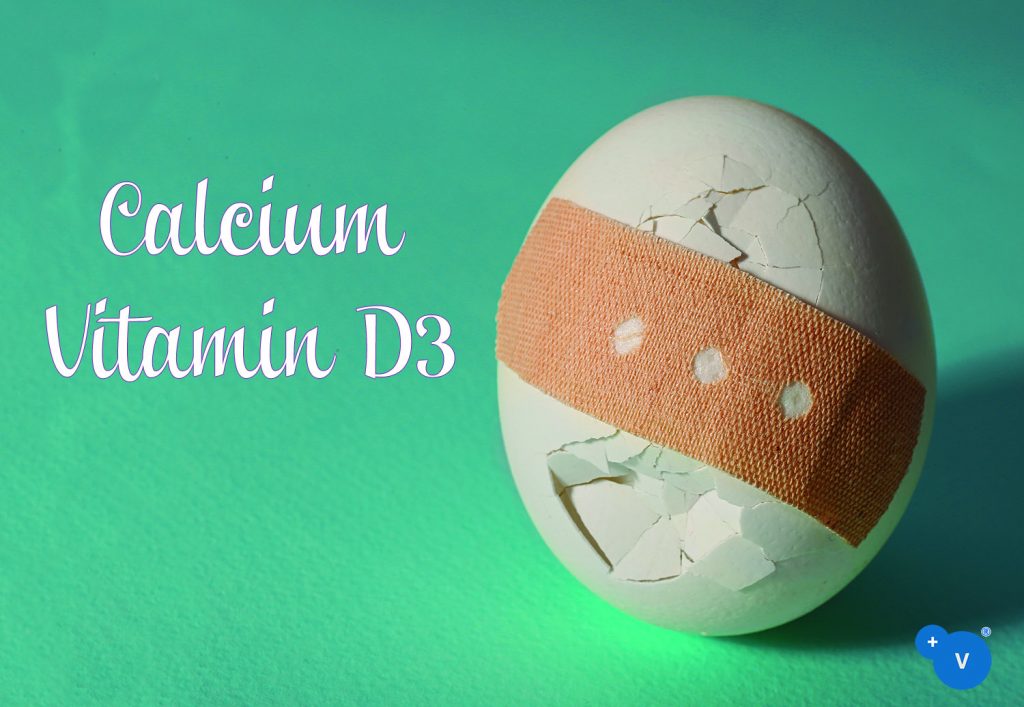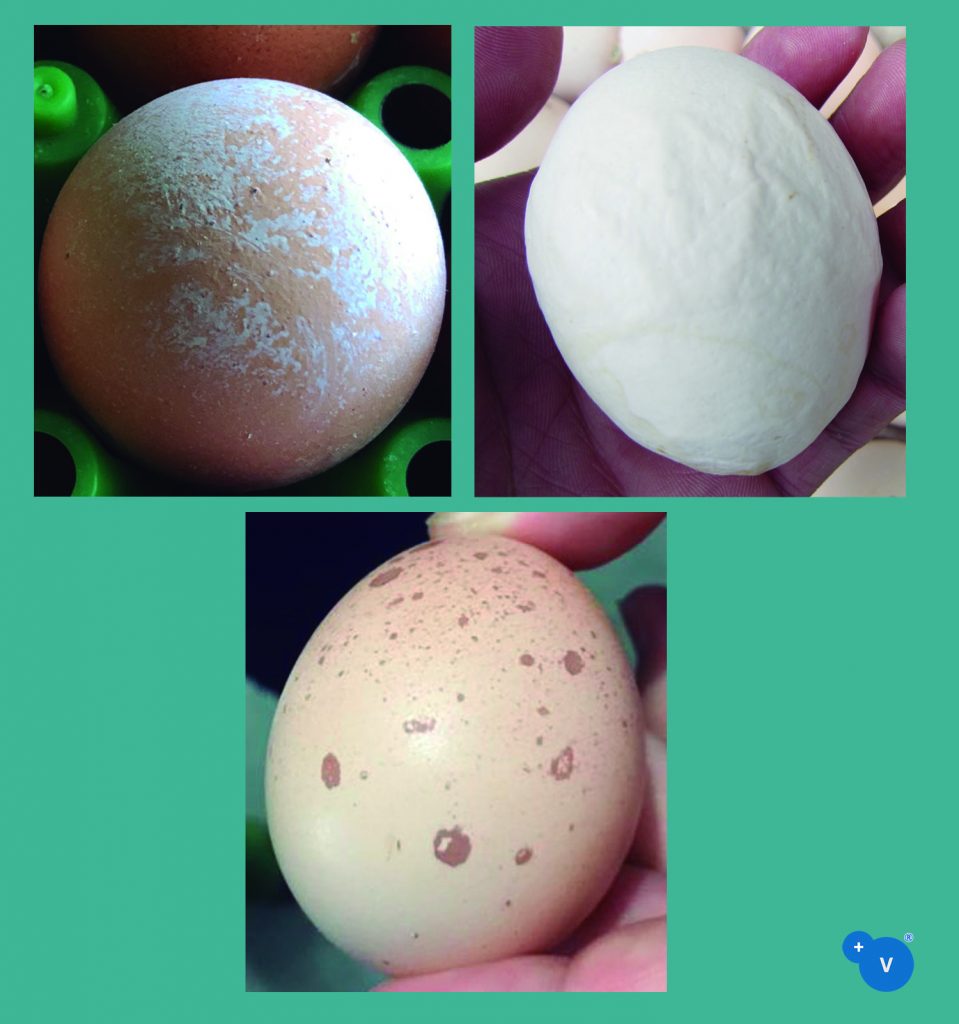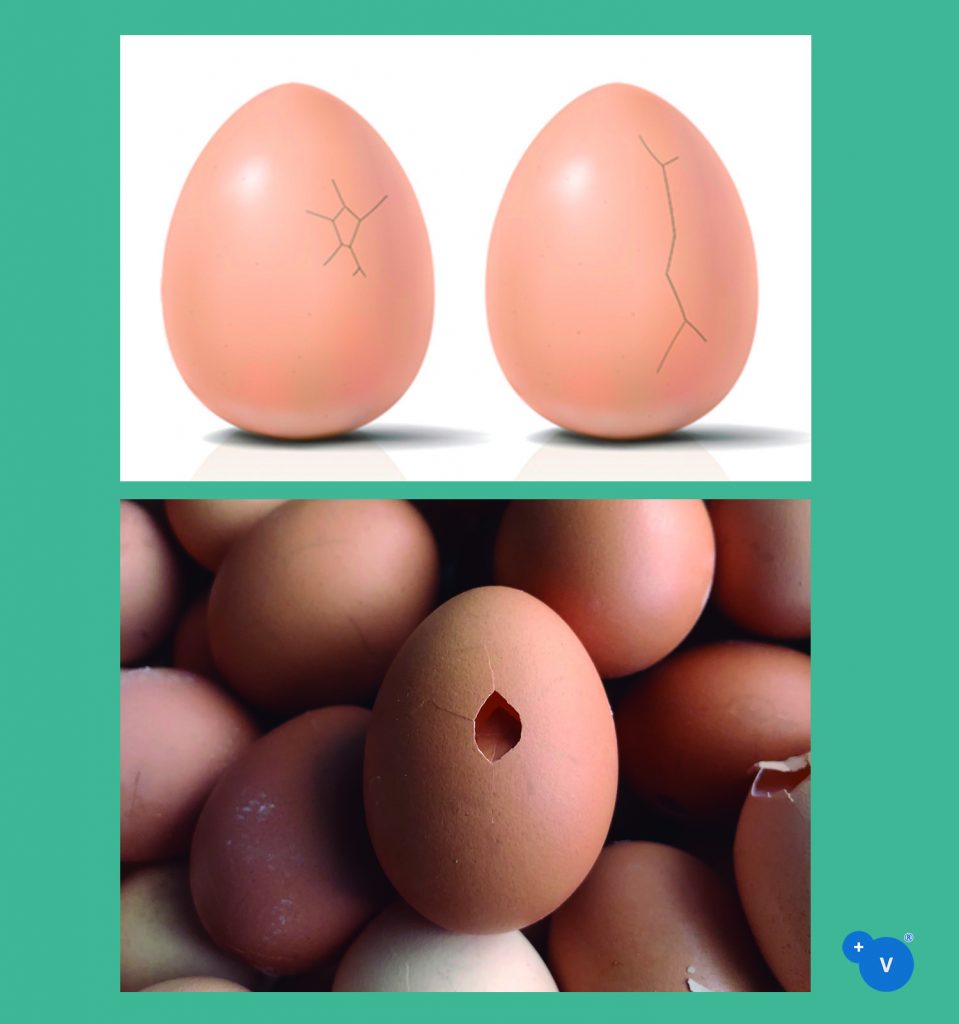08 Nov Role of calcium and vitamin D3 in eggshell quality

Egg shell quality is a major concern for farmers. Downgraded eggs account for 3.5 to 12% of all eggs and this percentage increases at the end of the laying cycle.
The crystalline layer of the eggshell, which is responsible of its mechanical strength, consists of 95% calcium carbonate. A good quality egg contains, on average, 2.2 grams of calcium.
As the egg travels through the oviduct during egg formation, the deposition of the calcareous eggshell happens in a part of the oviduct called “uterus” or “shell gland”. The eggshell deposition takes 15-20 hours in the hen, and during this process the necessary calcium is obtained from two sources: feed and bones.
Calcium is absorbed from feed in the intestine and its absorption and metabolism is regulated by vitamin D3. Whenever the percentage of calcium in the diet is suboptimal or its digestibility or metabolism are impaired, the necessary calcium for eggshell formation will be obtained from the bones. If the mobilization of skeletal calcium continues over time, eggshell defects and skeletal diseases appear.
FACTORS RELATED TO CALCIUM ABSORPTION IN THE INTESTINE
Calcium and phosphorus ratio
A high level of calcium in feed raises the pH of the gut and decreases the absorption of phosphorus, zinc and manganese. On the other hand, because phosphorus is a key element of the acid-base balance of the body, a high amount of phosphorus in feed and/or in plasma reduces calcium absorption and calcium mobilization from the bones.
Therefore the proper calcium to phosphorus ratio, that will depend on the breed of the bird and the development stage, is key for optimal absorption of calcium and phosphorus.
Timing of the eggshell formation
When the shell gland is inactive, intestinal absorption is 40% of the total calcium provided through feed, but it increases to 70% when the shell gland is active. The peak time of the shell gland activity is afternoon to late evening.
Particle size of the source of calcium
Calcium can be incorporated into feed under the form of limestone, oyster shells or calcium carbonate. It is advised to feed coarse particles or a mixture of coarse and fine particles, because coarse particles have a higher gizzard retention, stay longer in the gut and prolong calcium absorption. By giving coarse particles, there will be calcium still available in the intestine during the afternoon and evening, when the shell gland is active.
Bioavailability of the source of calcium
Calcium is usually provided through feed, but in certain situations, such as inadequate calcium supply, stress, low feed intake, hot weather, episodes of high percentage of downgraded eggs, etc it is necessary to supply an extra amount of calcium through drinking water.
Chelated calcium is a form of calcium with high bioavailability: absorption of calcium occurs through the intestinal wall and, for optimal absorption, calcium must be water soluble. Carbonates and phosphates show low solubility and are much less bioavailable. A high bioavailability is especially important when there are digestive problems and calcium uptake is reduced.
Gut health
Gut health is another factor that may affect the absorption of calcium in the gastrointestinal tract.
Whenever there is inflammation in the intestinal epithelium, the transport of nutrients is impaired. On the other hand, if there is diarrhea, the passage rate becomes faster and there is less calcium available for absorption.
Vitamin D3
Vitamin D3 stimulates the absorption of calcium, magnesium and phosphorus in the intestine and it is involved in the mineralization of bones. It is also necessary for embryonic development of the chick and for the immune response.
Vitamin D3 is absorbed from the intestinal tract in association with fats. Mycotoxins can impair Vitamin D3 absorption, so it is necessary to regularly use a mycotoxin binder (PlusBind©). Vitamin D3 goes through activation processes in the liver and kidneys, so optimal liver and kidney health is necessary for the utilization of the dietary vitamin D3.
Despite adequate levels of vitamin D3 in layer feeds, deficiency of vitamin D3 is relatively frequent and it is related to deficiencies in the eggshell, reduced hatchability, deformed embryos, skeletal diseases, rickets and cage layer fatigue.
EGGSHELL DEFECTS RELATED TO CALCIUM AND VITAMIN D3
Excess of calcium is associated with irregular calcium deposits on the eggshell; calcium coated eggs (powdery layers of calcium); corrugated eggshells; speckled shells; pimpled shells; pinholes; and abnormal pink color of the shell.

Deficiency of vitamin D3 and/or calcium is associated with shell-less eggs; soft eggs; hairline cracks and gross cracks.

IMPORTANCE OF CALCIUM AND VITAMIN D3 SUPPLEMENTATION IN OLDER HENS
As it is well known, older hens produce bigger eggs. As hens deposit a fixed amount of calcium per egg and calcium is the main element of the eggshell, a larger egg will have a thinner shell.
The digestibility and the metabolism of calcium is impaired in older hens, and gut inflammation is much more common, so it is advised to supplement calcium in a highly bioavailable form.
Besides, liver and kidney metabolism may be deficient in aging hens, deteriorating the activation process of vitamin D3. Administering an extra supplement of vitamin D3 is advised in older hens.
Products of choice
PhytoMax© is a combination of vitamins, chelated calcium, microminerals and essential oils to be given through drinking water. It is intended for layers and breeders to:
- Maintain the levels of calcium and magnesium needed for optimal egg production.
- Reinforce skeletal health.
- Prevent cage fatigue.
- Stimulate the hepatic metabolism and the immune system.
- Improve the quality of the egg and the health of day-old chicks.
- Avoid the drop of the laying rate produced by stress (management, vaccines, hot weather, etc…)
- At the start of the laying period, to boost productivity.
- Prolong the productive life of the hen.

Certain health statements may not be applicable in your region.

